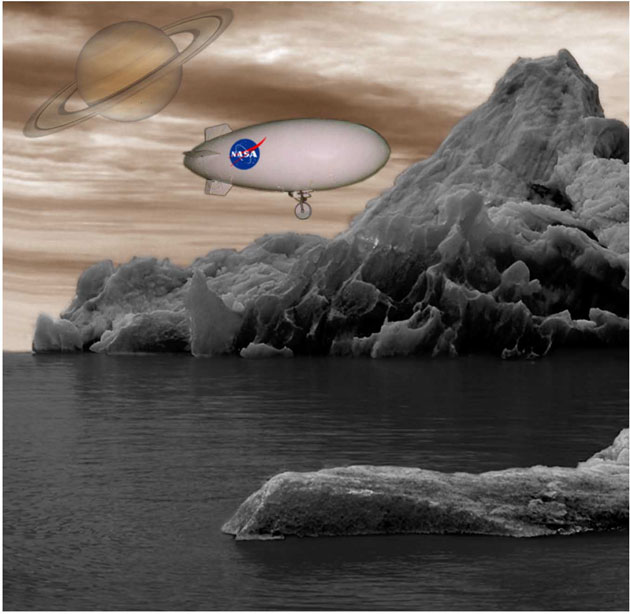NASA, Europe Explore Joint Mission to Outer Planets

BOULDER,Colo. - Scientific and technical teams from NASA and the European Space Agency(ESA) are fleshing out ideas for the next mission to fly to an outer planet -either to Jupiter or Saturn. A decision on which of those two exploration targetswill be the destination for the space agency?s next multibillion-dollarflagship mission is expected by year?s end.
?We havethe outer planet flagship mission in the [NASA] budget ? I do believe it willhappen,? said Fran Bagenal, a professor of astrophysical and planetary sciencesat the Laboratory for Atmospheric and Space Physics at the University ofColorado, Boulder. ?I couldn?t have said that four years ago ? now I have greatconfidence that this will happen.?
Bagenal ischair of the Outer Planets Assessment Group (OPAG), which was established byNASA in late 2004 to identify scientific priorities and pathways forexploration in the outersolar system.
In 2007,NASA completed a series of studies for flagship missions, honing down the listto the two candidate missions that now are under further study by both NASA andESA.
Down-selectionthis year
During atwo-day OPAG meeting in late March, officials provided a status report on thetwo outer planet exploration concepts now on the table: a Europa-Jupiter SystemMission and a Titan-Saturn System Mission. Each of those mission scenarios hasmultiple components with both ESA and NASA contributing to whichever outerplanet investigation is down-selected.
TheEuropa-Jupiter mission involves two orbiters with instruments designed tooperate in the severe radiation environment of Jupiter. In addition to ESA andNASA, Russia also has expressed interest in the mission, proposing a Europalander.
Get the Space.com Newsletter
Breaking space news, the latest updates on rocket launches, skywatching events and more!
TheTitan-Saturn flagship entails a main spacecraft that would orbit Saturn anddeployment of secondary spacecraft to the surfaceof Titan. For the secondary spacecraft, there are proposals that wouldinclude elements such as a balloon for exploring the atmosphere, surface probesand even a mini-submarine for exploring lakes on Titan.
?We are nolonger doing studies ? we are now getting ready for a mission,? said CurtNiebur, program officer for outer planets research at NASA headquarters inWashington. Money to push forward on an outer planets flagship, he said, is containedin NASA?s 2009 budget - with ESA conducting a down-select process through itsCosmic Vision process.
Potentialpartners
?There arebetween one and five different spacecraft elements that comprise thesemissions,? Niebur noted, along with potential contributions from the JapanAerospace Exploration Agency, as well Russia?s Federal Space Agency.
?At thispoint we have firm agreement with ESA. We don?t have firm agreements with otherpotential partners,? Niebur added.
For NASA,the outer planet flagship mission is cost-capped at $2.1 billion, Niebur said.?That?s all the money we have ? that?s all the money NASA has to put towardsthis.?
NASA andESA will both down-select to one outer planet mission this fall, Nieburexplained. The mission to the outer planet would be launched via an Atlas 5, aDelta 4 Heavy or an Ares V no later than 2017. The launch would bedesigned to send the spacecraft on a lengthy cruise toward its destination butone that would be no longer than seven years.
LeonardDudzinski, NASA?s program officer for radioisotope power capability, said theouter planet flagship would make use of Multi-Mission Radioisotope ThermoelectricGenerators.
At present,there is enough plutonium-238 dioxide allocated for 800 watts of power for anouter planet flagship mission - although due to the shortfallof the nuclear fuel, ?we?ve encouraged studies this year to look at reducedpower requirements to save some of that plutonium,? Dudzinski advised the OPAGattendees.
Eyeswide open
NASA andESA also are planning to issue a joint Announcement of Opportunity forscientific experiments to fly on the mission. The first of three NASA-hosted OuterPlanet Flagship Mission Instrument Workshops is to be held June 3-5 inPasadena, Calif., Niebur said.
?Whether ornot it?s Europa or Titan as the major target isn?t at all clear,? Bagenal said.Two large science definition teams are working hard to make these missionshappen, she said.
Bagenalemphasized that by careful, early study of these missions it is hoped that anycost overrun can be short-circuited.
?There?s nopoint in having an outer planet flagship mission that ends up costing somuch that we can?t afford to go to another target in the outer solar system foranother 15 years or 20 years,? Bagenal pointed out. ?So we really have thepressure on us to make sure that we can do something that is technically andfiscally responsible.?
Whatever outerplanet target is chosen - likely to occur this November - getting to thatlocale is tough, Bagenal told SPACE.com, be it taking a payload to thesurface of Titan or going into orbit around Europa.
?Thetechnologies are being worked ? they are being lined up,? Bagenal said.
?It?s justan issue of can you be clever and squeeze things down and do things veryefficiently to save money. And it?s money, money, money,? Bagenal said. ?Allthese studies are being done to make sure we?re going in carefully ? with oureyes wide open.?
- VIDEO: Parachuting Onto Titan
- Outer Planet-Palooza! Europa, Titan Missions Get Support
- IMAGES: Saturn and Titan
Join our Space Forums to keep talking space on the latest missions, night sky and more! And if you have a news tip, correction or comment, let us know at: community@space.com.

Leonard David is an award-winning space journalist who has been reporting on space activities for more than 50 years. Currently writing as Space.com's Space Insider Columnist among his other projects, Leonard has authored numerous books on space exploration, Mars missions and more, with his latest being "Moon Rush: The New Space Race" published in 2019 by National Geographic. He also wrote "Mars: Our Future on the Red Planet" released in 2016 by National Geographic. Leonard has served as a correspondent for SpaceNews, Scientific American and Aerospace America for the AIAA. He has received many awards, including the first Ordway Award for Sustained Excellence in Spaceflight History in 2015 at the AAS Wernher von Braun Memorial Symposium. You can find out Leonard's latest project at his website and on Twitter.









